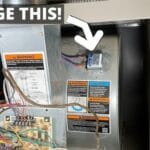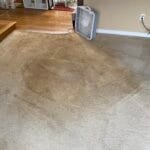Is your garage door giving you a headache because it won’t close unless you hold the button down? You’re not alone.
Many homeowners face this annoying problem, and it’s more than just a minor inconvenience. Every time you leave your house, you’re forced to spend extra time ensuring your garage is secure. But what if there was a simple solution just waiting to be discovered?
Imagine the relief and peace of mind you’ll feel once your garage door operates smoothly again. We’ll dive into the common reasons behind this issue and guide you through easy fixes. Keep reading to unlock the secrets to a hassle-free garage door experience. Your time is precious, and we’re here to help you reclaim it.

Credit: www.youtube.com
Common Causes
Garage doors often refuse to close without holding the button. This issue frustrates many homeowners. Understanding common causes helps fix this problem. By knowing potential issues, you can identify and solve them.
Sensor Misalignment
Sensors detect obstacles in the garage door’s path. If misaligned, they send wrong signals. This prevents the door from closing. Check if both sensors face each other. Adjust them until their lights glow steadily.
Obstructed Pathway
Objects in the door’s path cause it to stop. Remove any items blocking the sensors. Even small debris can interfere. Ensure the path is clear for smooth operation. Regular cleaning helps prevent this issue.
Faulty Wiring
Wiring issues lead to door malfunction. Inspect the wires connected to the sensors. Check for damage or disconnection. Faulty wiring disrupts signal transmission. Secure any loose wires for proper function.
Troubleshooting Sensors
When a garage door won’t close unless the button is held, faulty sensors may be the cause. Sensors detect obstacles, ensuring safety. If misaligned or dirty, they can prevent the door from closing properly. Troubleshooting sensor issues can often resolve these problems.
Checking Sensor Alignment
Ensure both sensors face each other directly. Misalignment can disrupt their signal. Use a level to check if they are at equal height. Adjust them slightly if needed. Tighten screws to secure their position firmly. Sensors must be stable for accurate functioning.
Cleaning Sensor Lenses
Dirt can block sensor signals. Use a soft cloth to clean lenses gently. Avoid harsh chemicals. A clean lens ensures clear communication between sensors. Regular cleaning prevents build-up. This simple task can often solve closing issues.
Inspecting Garage Door Tracks
Garage doors not closing without holding the button might indicate track issues. Check for bends or blockages. Ensure tracks are clean and aligned properly.
When your garage door refuses to close unless you hold the button, it can be more than just a minor inconvenience. Often, the culprit lies within the tracks. Inspecting garage door tracks can reveal issues that may not be immediately obvious. Understanding how to effectively evaluate and maintain these tracks can save you from a lot of frustration and repair costs. So, roll up your sleeves and let’s take a closer look at how you can tackle this problem.Removing Obstructions
Start by checking for any visible obstructions in the tracks. Even a small object or debris can prevent the door from closing smoothly. Look for items like pebbles, leaves, or even spider webs that might have found their way into the tracks. Use a flashlight to get a clear view and a damp cloth to wipe away dirt and grime. Removing these obstructions can often solve the problem immediately. Have you ever been surprised by how a simple cleaning task resolved a persistent issue?Evaluating Track Condition
Next, assess the condition of the tracks themselves. Are they bent or misaligned? Tracks that are even slightly out of alignment can halt the door’s movement. Use a level to ensure the tracks are straight and parallel. If they’re not, you might need to gently tap them back into place with a rubber mallet. This small adjustment can be the key to getting your garage door back in working order. Don’t forget to check for rust or corrosion, which can also impede function. Cleaning and lubricating the tracks can extend their lifespan and maintain smooth operation. Have you checked the tracks for rust recently? By focusing on these practical steps, you can often solve the garage door issue without professional help. Remember, regular inspection and maintenance are crucial. Isn’t it empowering to know you can handle such tasks yourself?
Credit: www.reddit.com
Examining The Control Wiring
Experiencing issues with your garage door not closing? Inspecting the control wiring might reveal the problem. Loose or damaged wires can prevent the door from operating correctly, requiring you to hold the button. Checking and securing these connections could restore normal function.
Sometimes, your garage door might refuse to close unless you keep holding the button. It’s a common issue that might leave you scratching your head. One crucial area to check is the control wiring. Ensuring that the wiring is intact and properly connected is vital for the seamless operation of your garage door. This inspection can often reveal hidden issues that are easier to fix than you might think. Let’s dive into the steps involved in examining the control wiring, starting with identifying loose connections and testing wire integrity.Identifying Loose Connections
Loose connections are often the culprits behind garage door malfunctions. Just like when your headphones don’t work unless plugged in just right, your garage door wiring can face similar issues. Begin by inspecting the wires connected to the wall button and the opener unit. Look for any wires that have come loose or appear worn out. Tighten any visible screws holding the wires. Sometimes, a simple tightening can resolve the issue. Have you ever had a light switch that wouldn’t work because of a loose wire? The same principle applies here. Don’t underestimate the power of a snug connection.Testing Wire Integrity
Once connections are secure, it’s time to test wire integrity. Faulty wires can cause intermittent functioning. Use a multimeter to check the continuity of each wire. A break in the wire can mean that electricity isn’t flowing properly, causing the door to misbehave. You might find that a wire is frayed or damaged. In such cases, replacing the wire can be a quick fix. Have you ever experienced a situation where a broken wire stopped your favorite gadget from working? Similarly, ensuring your garage door wires are in good condition is crucial. Could a simple wire issue be the barrier between you and a fully functioning garage door?Resetting The Garage Door Opener
Experiencing issues with your garage door? It might not close unless you hold the button. This problem often indicates a misaligned sensor or an obstructed path. Resetting the garage door opener can help resolve these common issues efficiently and ensure smooth operation.
Resetting your garage door opener can seem like a daunting task, but it’s often the first step to solving issues such as your door not closing unless you hold the button. It might feel like you’re venturing into unknown territory, yet with a little guidance, you’ll find it simpler than you’d expect. Let’s dive into the process and get your garage door back to normal operation.Locating The Reset Button
Before you start, it’s essential to find the reset button on your garage door opener. Typically, this button is located on the motor unit mounted on the ceiling. It might be labeled as “Learn” or “Set.” Take a moment to consult your garage door opener’s manual. This will ensure you know precisely where your reset button is located and what it looks like. If you can’t find the manual, a quick online search with your opener’s model number should yield the answers you need.Performing A System Reset
Once you’ve located the reset button, the next step is to perform the reset. Press and hold the button for about 5-10 seconds. You’ll often see an LED light blink or hear a clicking sound, indicating the reset process has started. Release the button after the reset indicator activates. This action effectively wipes the system’s memory and prepares it for reprogramming. Be sure to have your remote controls handy, as you’ll need to pair them again post-reset. Have you ever noticed how a simple reset can solve complex problems, not just in tech but in life too? Sometimes, starting over is the most straightforward solution. So, why not give it a try with your garage door opener and see how it transforms your problem-solving approach? Resetting your garage door opener isn’t just about fixing a door; it’s about empowerment. By taking control of this small issue, you might feel more equipped to tackle other challenges around your home. So, what’s stopping you from pressing that button?
Credit: www.reddit.com
Professional Assistance
Sometimes, no matter how many DIY tricks you try, your garage door simply refuses to budge without holding down the button. It can be frustrating, especially when you’re in a rush. This is when considering professional assistance becomes essential. Seeking help from a skilled technician not only saves you time but also ensures your garage door operates safely and smoothly. But when should you actually call in the pros? And how do you choose the right service? Let’s dive into these crucial questions.
When To Call A Technician
Have you noticed unusual noises like grinding or squeaking? This might indicate a deeper issue that needs professional attention. If your garage door exhibits erratic behavior, such as stopping halfway or reversing unexpectedly, these are signs you shouldn’t ignore.
Another critical moment to call a technician is when your garage door fails to close completely, even after troubleshooting. Trying to fix complex electrical issues without proper knowledge can lead to more significant problems or safety hazards.
Think of the potential risks. Would you rather spend a small amount on expert help now or face a hefty repair bill later? Don’t wait until it’s too late.
Choosing The Right Service
Finding the right garage door service is as important as deciding to call one. Check online reviews and ratings. Do previous customers seem satisfied? An abundance of positive feedback can point you in the right direction.
Experience matters. How long has the company been in business? A seasoned service provider is more likely to diagnose and fix issues efficiently. You might also want to ask friends or neighbors for recommendations. Personal experiences can be invaluable in making your decision.
Consider the customer service aspect. Are they responsive and willing to answer your questions? A company that values its clients will provide clear estimates and transparent communication. After all, you deserve to feel confident in your choice.
In the end, it’s about ensuring peace of mind. You want to know your garage door is in expert hands, ready to function flawlessly when you need it the most. So, next time your garage door acts up, remember these tips and make a choice that protects your home and sanity.
Preventive Measures
Trouble closing your garage door? Check sensors for obstructions or misalignment. Clean them with a soft cloth. Sometimes the issue is with the wiring, so inspect for any loose connections. Regular maintenance keeps your garage door functioning smoothly.
Preventive measures are vital for ensuring your garage door operates smoothly. Regular checks and maintenance can save you from unexpected hassles. Addressing minor issues early can prevent them from becoming major problems. Here are some essential preventive steps to consider.Regular Maintenance Tips
Regular maintenance keeps your garage door working efficiently. Check the door’s components monthly. Look for any signs of wear and tear. Lubricate the moving parts like rollers and hinges. Use a silicone-based lubricant for best results. Clean the tracks and remove any debris. This ensures smooth operation. Inspect the cables for fraying or damage. Replace them if necessary. Tighten any loose bolts or screws. This prevents parts from becoming loose over time. Keep the door balanced. An unbalanced door can strain the opener and shorten its lifespan.Sensor Calibration
Sensors play a crucial role in garage door safety. They prevent the door from closing on objects or people. Ensure the sensors are aligned properly. Misaligned sensors can cause the door to malfunction. Use a level to check their alignment. Clean the sensor lenses with a soft cloth. Dust and dirt can obstruct the sensor signal. Test the sensors monthly. Place an object in the door’s path. The door should reverse if the sensors work correctly. If not, recalibrate them according to the manufacturer’s instructions. This ensures safe and reliable operation.Frequently Asked Questions
Why Does My Garage Door Only Close When I Hold The Button?
Your garage door sensors may be misaligned or blocked. Check for obstructions or clean the sensor lenses.
How Can I Fix Garage Door Sensor Issues?
Align the sensors properly. Clean dirt or debris off the lenses. Ensure no obstructions are in the way.
What Should I Do If The Garage Door Won’t Close?
Inspect the sensors. Check for any blinking lights indicating a problem. Align or clean them if needed.
Can A Faulty Remote Cause The Door Closing Issue?
Yes, a faulty remote might cause issues. Test the remote with new batteries or try reprogramming it.
What Are Common Signs Of Garage Door Sensor Problems?
The door won’t close fully. The sensor lights blink. You hear clicking noises. These are common indicators.
Conclusion
Understanding why your garage door won’t close can be frustrating. Often, the issue lies in misaligned sensors. It’s crucial to check sensor alignment regularly. Clean them to ensure proper function. Worn-out rollers might also be a problem. They can hinder smooth operation.
Inspect and replace if needed. Sometimes, issues stem from the control panel. A quick reset might solve it. Regular maintenance prevents unexpected troubles. Keep your garage door parts in good condition. Call a professional if problems persist. Your garage door should close smoothly with these tips.





